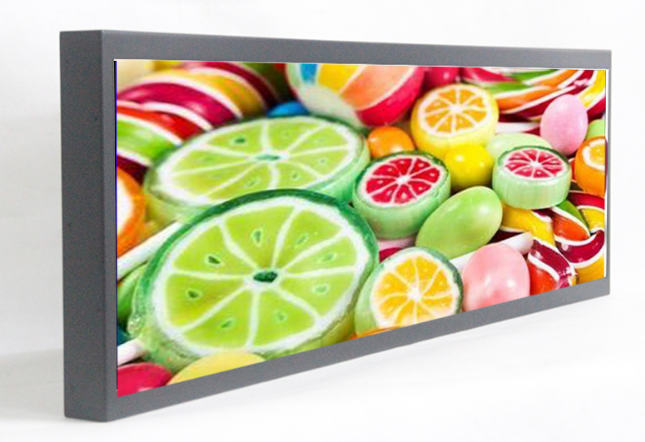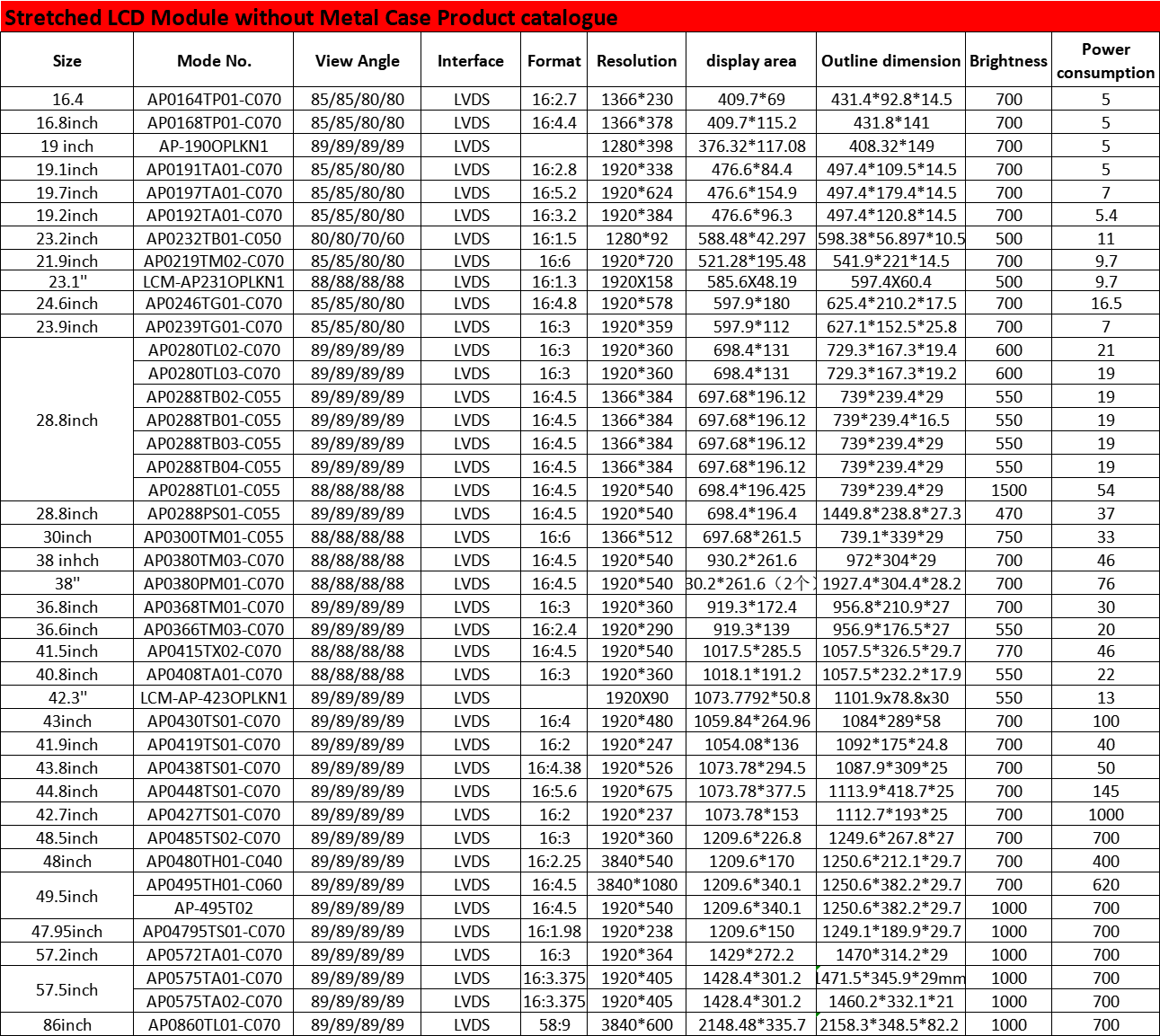What is a Stretched LCD Display?
 A stretched LCD display is a specialized type of liquid crystal display (LCD) that features a wider-than-usual aspect ratio. Unlike traditional displays that use standard aspect ratios, such as 16:9 or 4:3, stretched LCDs have extremely wide proportions, such as 16:4, 16:3, or even 32:9. This wide format allows these displays to accommodate content in a horizontally elongated fashion, enabling users to present a range of data, images, and videos simultaneously across a single screen.
A stretched LCD display is a specialized type of liquid crystal display (LCD) that features a wider-than-usual aspect ratio. Unlike traditional displays that use standard aspect ratios, such as 16:9 or 4:3, stretched LCDs have extremely wide proportions, such as 16:4, 16:3, or even 32:9. This wide format allows these displays to accommodate content in a horizontally elongated fashion, enabling users to present a range of data, images, and videos simultaneously across a single screen.The stretched format is ideal for applications where information needs to be communicated in an efficient, visually appealing way, particularly when there is a need to display dynamic content, advertisements, and real-time data. These displays are commonly used in places where high visibility, continuous content presentation, and a large surface area are required.
At their core, stretched LCD displays function in a similar manner to traditional LCD screens. They rely on liquid crystal technology to control light passing through them, producing images and text that are displayed to users. Here’s how they work:
Liquid Crystal Technology: The liquid crystal material in an LCD is responsible for regulating light. Liquid crystals themselves don’t emit light; instead, they control the passage of light through a series of pixels. The display’s backlight illuminates the screen, and liquid crystals act as light modulators, creating images based on the electric current applied to them. This allows the display to produce detailed and vibrant content.
Backlight: The LED backlighting used in stretched LCD displays ensures high brightness and vivid colors. LED backlights are more efficient than older types of backlighting (such as CCFL), which results in reduced power consumption and improved contrast ratios. The backlight illuminates the liquid crystals, which create the images that are visible on the screen. This method of backlighting is energy-efficient and ensures consistent brightness across the display, even on very wide panels.
Wide Aspect Ratio: The most prominent feature of stretched LCD displays is their ultra-wide aspect ratio. These displays are designed to provide more horizontal space than traditional screens. This allows businesses and organizations to display a variety of content, from multiple data streams to advertisements, all in a single, continuous view. The wide aspect ratio is particularly useful in dynamic environments where information needs to be presented in a linear, uninterrupted fashion.
Electronic Control System: A sophisticated control system is used to manage the various pixels across the display. Since the screen is much wider than typical displays, this system ensures that content is displayed evenly across the entire surface. This system also manages the interaction between the liquid crystals and the LED backlighting to ensure the image is sharp and vibrant.
Stretched LCD displays have several unique features that distinguish them from conventional monitors or televisions. Some of the key features include:
Ultra-Wide Aspect Ratios: The defining characteristic of stretched LCD displays is their ultra-wide aspect ratio. While conventional screens often use a 16:9 or 4:3 format, stretched displays typically feature an aspect ratio of 16:4, 16:3, or even 32:9, allowing for a panoramic visual experience. This extra width is ideal for displaying large amounts of content or presenting visual data in a more organized and space-efficient manner.
High Resolution: Despite their wide format, stretched LCD displays retain high resolution, typically ranging from Full HD (1920×1080) to 4K (3840×2160). High resolution ensures that the content displayed on these panels is sharp, clear, and vibrant. The ability to display detailed images, videos, and text without distortion is crucial for the effectiveness of stretched LCD displays, particularly when used in commercial applications.
Slim Design: Most stretched LCD displays are designed with a slim profile. This design allows them to be installed in narrow spaces or mounted on walls without taking up too much room. Their slim profile makes them perfect for environments where space is at a premium, such as public transit stations, airports, or retail stores.
Energy Efficiency: Stretched LCD displays often use LED backlighting, which is known for being highly energy-efficient. This type of backlighting consumes less power than traditional CCFL backlighting, which makes stretched LCDs an environmentally friendly and cost-effective choice for applications that require continuous operation.
Customization: These displays can often be customized to suit specific needs. For instance, they can be mounted vertically or horizontally, depending on the space they’re being installed in and the content being displayed. Some stretched LCD models also come with customizable bezels, allowing users to combine multiple screens into a larger, unified display.
Applications of Stretched LCD Displays
1.Digital Signage
2. Wayfinding Systems
3. Control Rooms and Surveillance
4. Interactive Kiosks
5. Public Information Systems
6. Entertainment and Sports Venues
Aplus is specializing and producing full sizes of stretched lcd display with different dimension, brightness,resolution, below are our stretched lcd panel and monitor product list,we could cut all the sizes accordingly to your specific project requirments, pls kindly contact our sales people:sales@apluslcd.com or add the wechat/whatsapp:+86 13560738214 to get the datasheet and send your project requirements.



